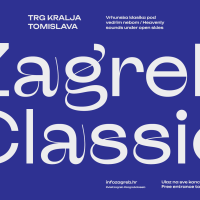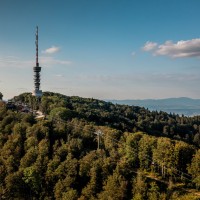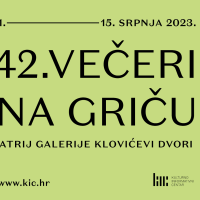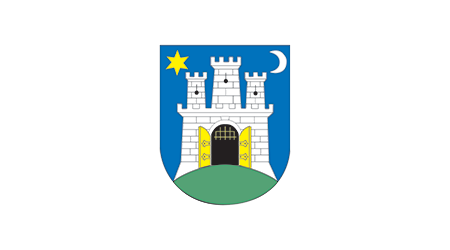Do you know what a Roman dodecahedron is?
This summer, the Archaeological Museum invites you to visit two exhibitions: Thesaurus Colapis Fluminis – The Treasure of the Kupa River: Archaeological Excavations of the Kupa near Sisak before WWI; and a somewhat smaller exhibition dedicated to the Roman dodecahedron, a mystical and rare object, among the very few of its kind ever found in the world and one of the best preserved to boot. Are you curious to know what this is?
 This mysterious object, originating from the Roman Empire, has 12 flat pentagonal faces and its function remains even more of a mystery. Known as a Roman dodecahedron, it is the pivotal point of one of the two exhibitions that will be on display at the Archaeological Museum until the beginning of September. The function and purpose of the bronze Roman dodecahedron has never been fully explained. It is certainly part of the Roman Empire legacy, albeit not something that is commonly found or seen, and it has been the subject of a great deal of attention among experts and amateurs alike.
This mysterious object, originating from the Roman Empire, has 12 flat pentagonal faces and its function remains even more of a mystery. Known as a Roman dodecahedron, it is the pivotal point of one of the two exhibitions that will be on display at the Archaeological Museum until the beginning of September. The function and purpose of the bronze Roman dodecahedron has never been fully explained. It is certainly part of the Roman Empire legacy, albeit not something that is commonly found or seen, and it has been the subject of a great deal of attention among experts and amateurs alike.
Its purpose is still a mystery, unlike its provenance, but that also took some time to decipher. For a long time it was believed that the mysterious object originated not from the Roman, but from the Ottoman Empire, and all sorts of fables were circulated about its purpose and function. Even today, archaeologists are not in agreement about its possible use. Some lean more toward the side of practicality and suggest that it served as a candlestick or lantern stick holder. Others believe that it was used in cult ceremonies, and some think it had a practical application in astronomy and astrology. The last suggestion, however, seems pretty implausible. As of recently, it has been speculated that the object was used by the Romans as a calendar.
The one on display at the Archaeological Museum in Zagreb was found in Lower Austria between the villages of Hof (Croatian Cimof) and Au am Leithaberge (Croatian Cunava) at the beginning of the second half of the 19th century. It is one of the best preserved among the 92 similar objects which have been found all over the world.
The other exhibition which will remain open at the Archaeological Museum until 2nd September showcases a somewhat more recent exhibit. The title of the exhibition is The Treasure of the Kupa River: Archaeological Excavations of the Kupa near Sisak before WWI. It provides insight into over 200 artefacts which were found during archaeological explorations and excavations in the area along the Kupa River. The exhibition is additionally illustrated with photos, posters and a multimedia presentation.
Ancient Siscia was one of the most important cities in the Roman province known as Pannonia. The Romans had erected their city on the location of a former prehistoric settlement, which is known to have existed on the very auspicious location on the banks of the Odra and Kupa rivers. The development of modern-day Sisak has relied on this ideal setting along the network of navigable waterways which the Hapsburg Monarchy recognized as a development potential in somewhat more recent history. The river beds were deepened on many occasions, and every time a host of prehistoric, Roman and medieval artefacts were unearthed as by-products of the construction work. The most significant excavation project took place in 1912 and unearthed over a thousand prehistoric and Roman objects. They are all kept at the Archaeological Museum where they have been carefully catalogued, scientifically analysed and at one time or another presented to the general public. The idea behind this exhibition is to showcase only those objects which originate from the 1912 excavation of the Kupa River bed to mark the 100th anniversary of the excavation project.
Published: 03.07.2012
 Hrvatski
Hrvatski English
English Deutsch
Deutsch Spanish
Spanish French
French Italian
Italian Russian
Russian Korean
Korean Japanese
Japanese Chinese
Chinese This mysterious object, originating from the Roman Empire, has 12 flat pentagonal faces and its function remains even more of a mystery. Known as a Roman dodecahedron, it is the pivotal point of one of the two exhibitions that will be on display at the Archaeological Museum until the beginning of September. The function and purpose of the bronze Roman dodecahedron has never been fully explained. It is certainly part of the Roman Empire legacy, albeit not something that is commonly found or seen, and it has been the subject of a great deal of attention among experts and amateurs alike.
This mysterious object, originating from the Roman Empire, has 12 flat pentagonal faces and its function remains even more of a mystery. Known as a Roman dodecahedron, it is the pivotal point of one of the two exhibitions that will be on display at the Archaeological Museum until the beginning of September. The function and purpose of the bronze Roman dodecahedron has never been fully explained. It is certainly part of the Roman Empire legacy, albeit not something that is commonly found or seen, and it has been the subject of a great deal of attention among experts and amateurs alike.









